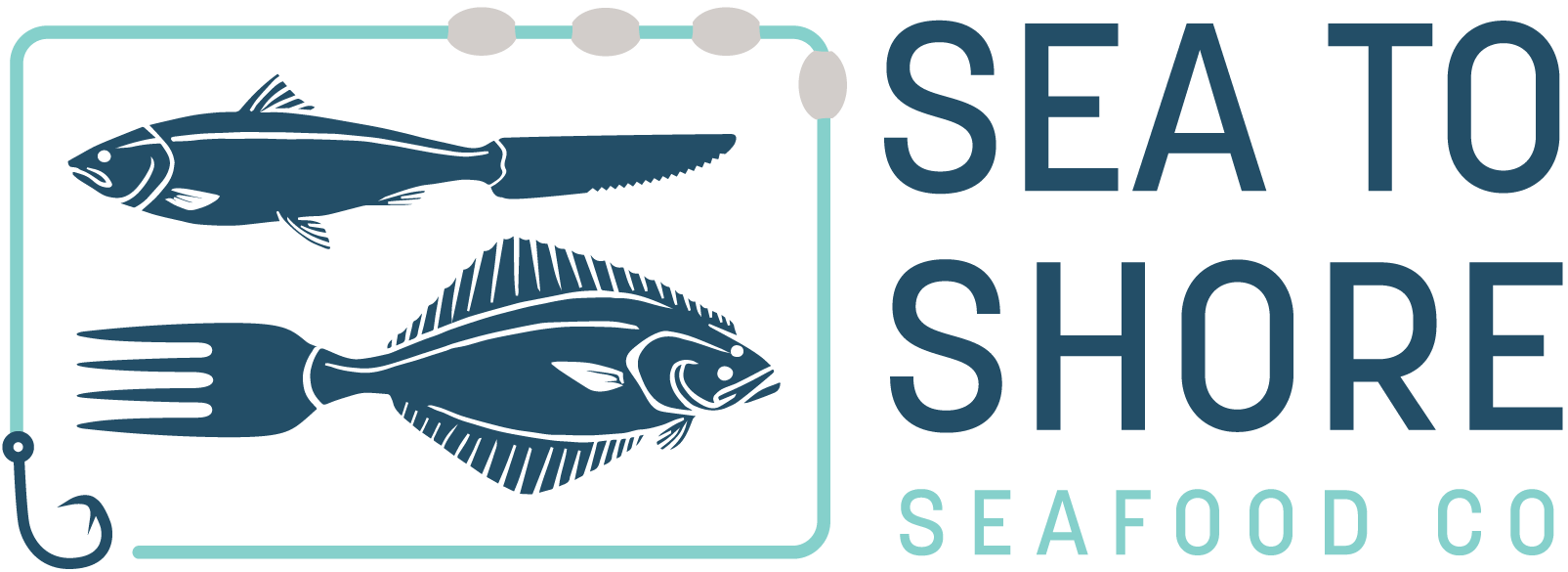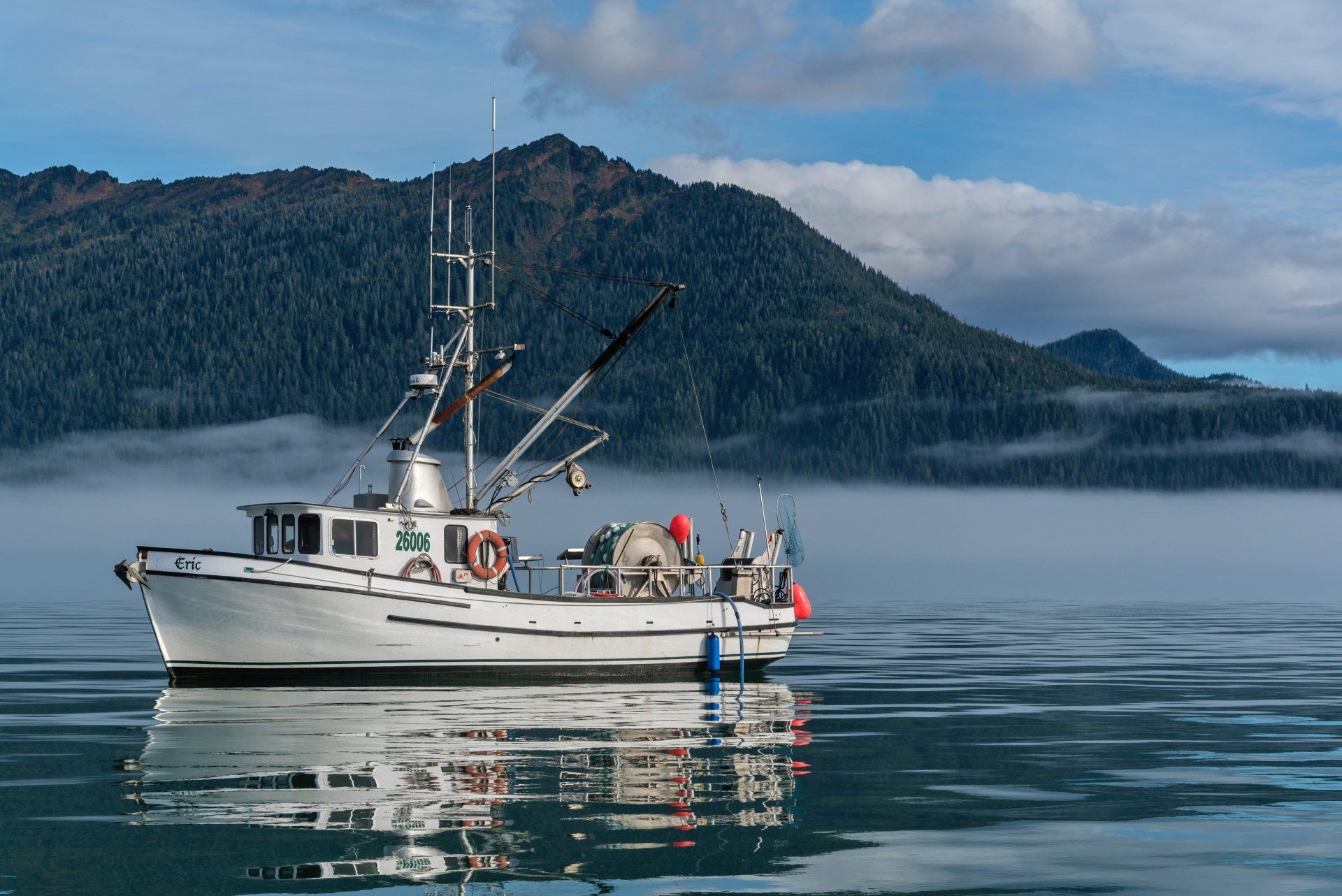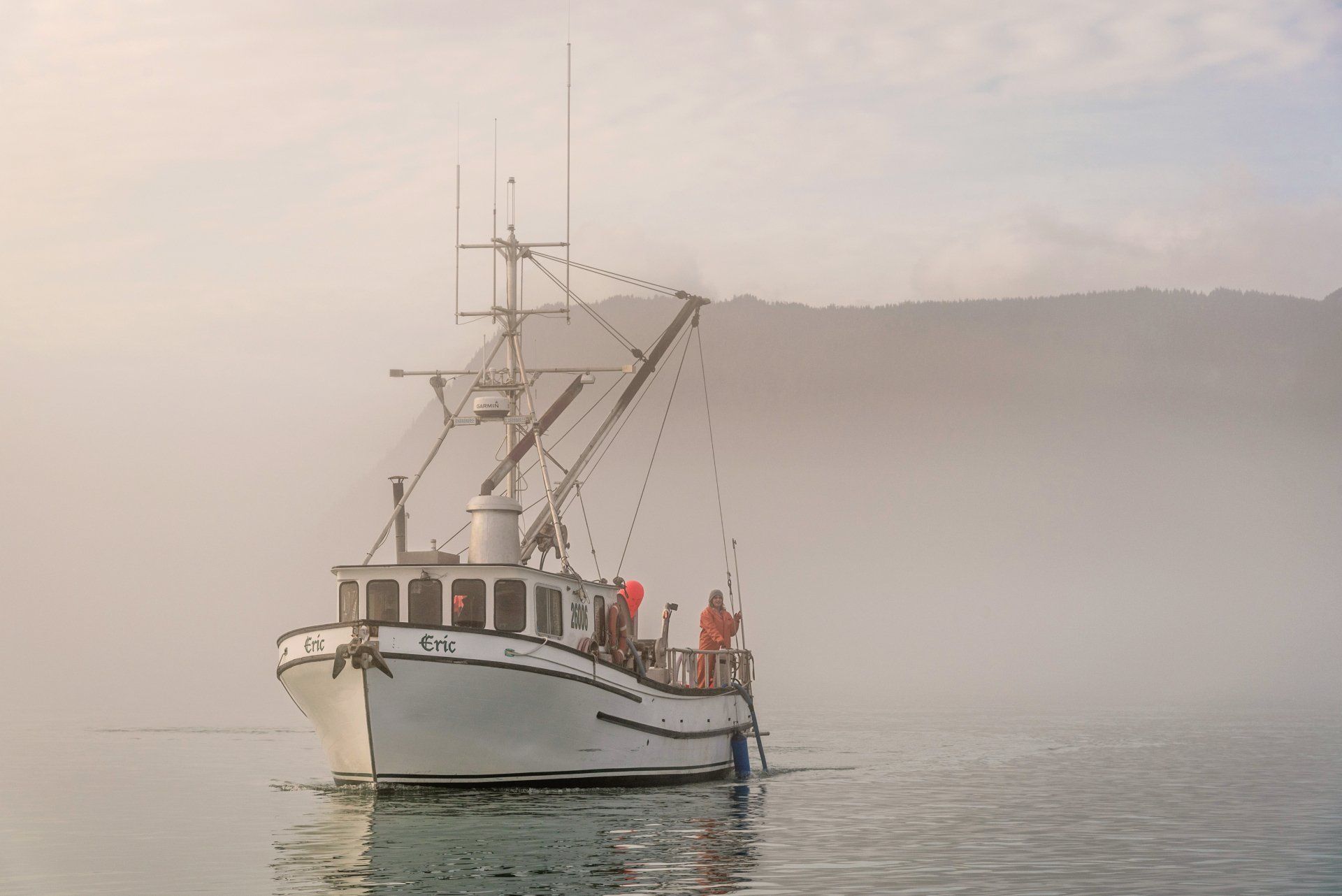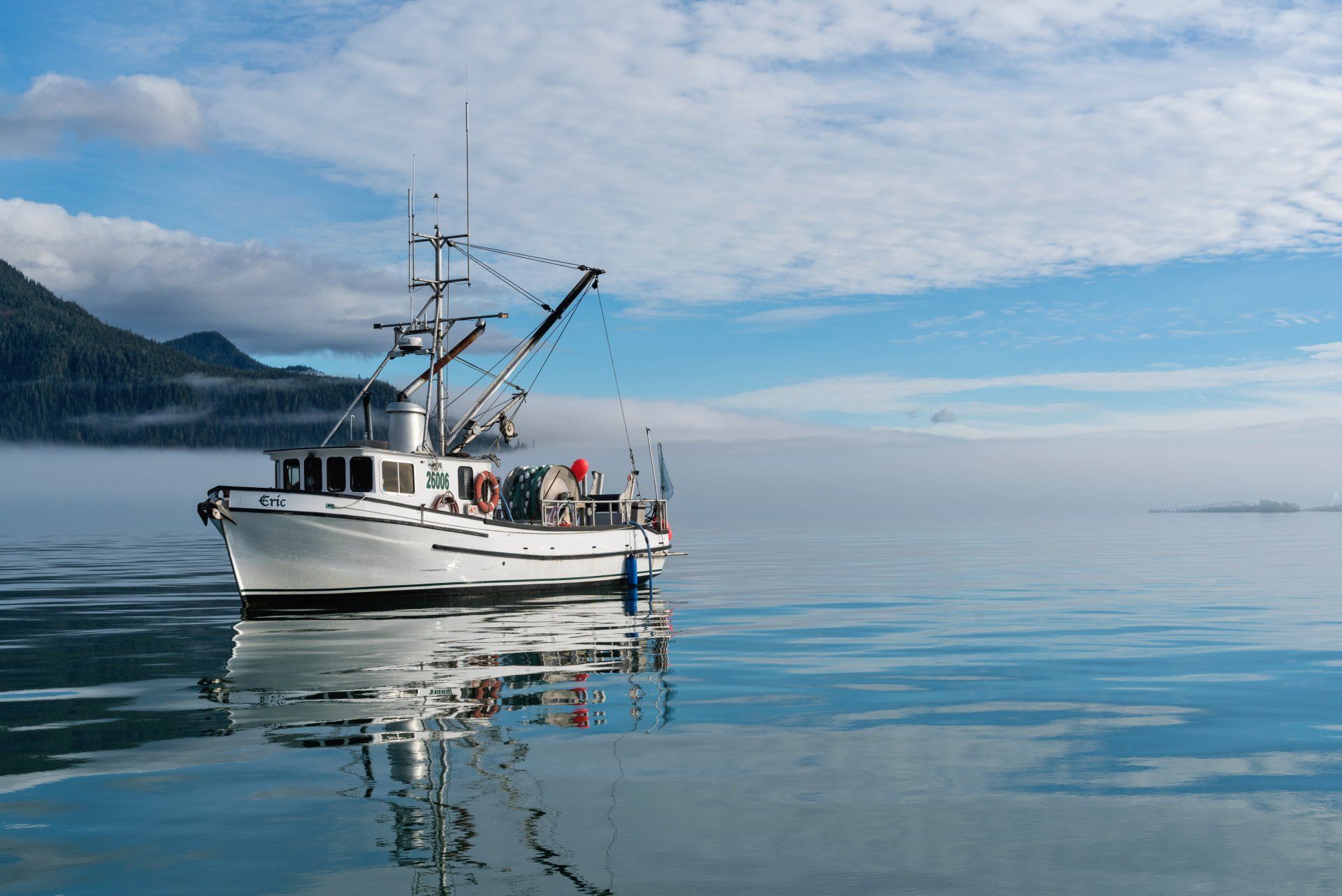Tour Our Boat
The "Eric" is a 38ft. fiberglass boat fishing Alaskan waters.
The "Eric" Early History
The Eric is a 1964, 38ft fiberglass boat built by Thermodyne Inc, a boat builder in the 1960’s that was situated on Steam Boat Slough in Marysville, WA. The stories from a few old timers on the docks is that the Eric was the first boat built out of that specific hull-shape’s mold. As the story goes, many boats of different lengths and variations were built based upon the Eric’s hull. Frank Barr had the boat built and was the original owner. He named the vessel after his dad, Eric Barr. She was originally built as a False Pass gillnetter, making her way from Puget Sound up the Inside Passage through British Columbia and Southeast Alaska, then across the Gulf of Alaska where she spent the summer fishing False Pass in the Aleutian Islands. The “Eric” would then turn and retrace her voyage back to Puget Sound where she spent her winters. We are not quite sure how many years this journey took place, but do know that she eventually ended up in Petersburg, AK where she was owned and ran by John Stephen, a prominent, well-respected and well-liked Petersburg local. Either John or the owner before him had converted the “Eric” from a gillnet boat to a troller and longliner. Sometime in the 80’s or early 90’s, the Eric’s engine room caught fire, destroying the engine room and main cabin. In order for her to fish the following season, the cabin was hastily rebuilt which resulted in the cabin you see today. It was not built to the original size or shape and lacks the fly bridge (the area on top of the cabin where you can drive from) that is displayed in the older photos of the Eric.
Our Search for a New Boat
Fast forward to 2013, where Chelsea and Pete have chosen to set out on a new life journey together. Pete’s time in the Coast Guard would soon be coming to an end and Chelsea knew that they would need a bigger boat if they were to fish together. Their mission had begun to find a new (old) boat with a very minimal budget and a specific set of requirements. The new boat had to be at least 38ft long, fiberglass, in decent working order, be a gillnetter or have the ability to be converted to one and be comfortable enough for the two of them to live on all summer. Their search started in Kodiak, AK, ventured to a bidding war in Sitka, AK, then evolved into a road trip through British Columbia where every port on the east coast of Vancouver Island was scoured. Still not finding the right vessel, the search continued from every harbor from Bellingham WA, down to Moss Landing, CA. Yet still, they were unable to find a suitable boat that was in their price range. Realizing their strict budget and detailed list of needs was harder to come by than expected, it was time to return home to Petersburg, AK and reassess.
While down on the dock to make sure that the F/V Ginny Sue, (Chelsea’s mom’s boat and the one she had been using for the past few years) was shoveled and in good order, they had noticed a boat in the slip next door and an older gentleman shoveling the snow off its deck. With the man visibly winded, they lent him a hand and helped shovel the boat. The man was the best friend of the boat’s owner, John Stephen. Sadly, John was terminally ill and would soon pass shortly thereafter. That boat eventually came up for sale. She was rigged for trolling and was in rough shape, maintenance had been put off for what looked like years, but she had a good hull, she floated and had a freshly rebuilt engine that was well maintained. Pete and Chelsea decided to check it out. Her decks were rotted, the wiring was a nightmare, the mast was an old steel light pole and she would need to be completely refit in order to become a gillnetter. But the price was right and she had a lot of potential. Chelsea and Pete decided that given the fact they had traveled pretty much up and down the entire west coast of North America, with no luck of finding a boat, to eventually find a suitable boat that fit their requirements in the slip right next to the boat they were currently fishing, was a sign they needed to acknowledge. They were able purchase the F/V Eric for just under their budget.
The Real Work Starts
The back deck of the Eric was squishy and flexed when you walked upon it, which is not what you want for the deck of your fishing boat. Decades of constant rain and seawater had penetrated the decks and had rotted the now, close to 50-year-old, wood and foam that formed the skeleton of the deck. The whole deck needed to be replaced. That winter Pete and Chelsea took a leap of faith and decided to start cutting. Pete was still working full time in the Coast Guard, so the work days turned into work nights, burning the midnight oil in order to completely gut the Eric down to the hull from the cabin, aft. After a few burnt grinders, countless grinding wheels, midnight quesadilla dinners, help from family and good friends (Aaronmicheal), and many cold showers to wash off the fiberglass dust, the hard work eventually resulted in a fresh canvas upon which to build. Now that the boat was gutted, it was time to rebuild.
Money was extremely tight, so they got lucky when they hired a local fiberglass craftsman named Tim, who was willing to teach and share his knowledge with Pete and Chelsea. He was an interesting man, always with a lit Marlboro cigarette in his mouth, no respirator, and a carefree attitude when it came to mixing a fresh batch of resin and slapping it onto some glass. Although there were differing ideas on the importance of safety, Tim was an artist and a kind man. He was extremely talented in his craft and was willing and able to teach both Chelsea and Pete the skills needed to finish the fiberglass project themselves, which helped with the budget. Once the new decks were constructed, there was still much work to do. The decision was made to heavily insulate the fish holds, enabling the Eric to hold ice for longer periods which meant a higher quality fish and more fishing time. Chelsea’s mom Shannon lent her time, knowledge and welder to help Pete fabricate some new rails, reducing the likelihood of someone going overboard in rough seas. Pete then took his new found knowledge for welding aluminum and built the Eric a new mast, boom, aft steering station and hatch covers all in the garage of the house they were renting at the time. Hydraulic lines and electric wires were then ran and all the finishing touches were added. That summer, after countless 16-hour days, an untold number of makeshift bandages, four barrels of resin, 7 rolls of fiberglass, a trailer full of aluminum, gallons of sweat, cups of tears and some extremely irritated skin, the Eric was ready to fish.
Her Present State
Every year since that first major project, the Eric has been slowly upgraded and brought into the 21st century. Pete will usually spend a few months each winter upgrading some aspect of the old girl. The cabin was gutted and the interior rebuilt, the wiring ripped out and replaced from stem to stern, a new stove was installed to replace the old one that almost burned her down again, every lightbulb on board converted to LED and the ancient electronics and cone radar systems upgraded to modern electronics. Pete built a new cleaning system for the back deck, a custom table with 4 pressure bleeding racks enabling the Eric to harvest and produce some of the highest quality, processed at sea salmon around. When the old hydraulic hoses started to show their age and occasionally burst, Pete decided to replace every hose with stainless steel tubing. A project which he thought would be straightforward, turned into a 2-and-a-half-month ordeal, a can of worms that kept growing the more he dug. Yet the end result is a back deck and cockpit that looks like it belongs inside an airplane wing. He likes to think it makes the boat faster; at the very least, it’s definitely much shinier. ;) The project list continues to grow and forever will. An older boat like the Eric will always need updating and maintenance as all boats do. The Eric is a source of pride for both Pete and Chelsea. She has become a part of the Keutmann family. The Eric is the reason Sea to Shore exists and provides a means of making a living for Chelsea and Pete. She has sheltered them from storms, kept them warm at the end of many long days and charged through the waves like a plow through a field. She is a living, breathing machine that gives the love back for which she is shown. With every oil change, new coat of paint and zinc that gets replaced, she will hopefully continue to roam the waters of Southeast Alaska for decades to come.





